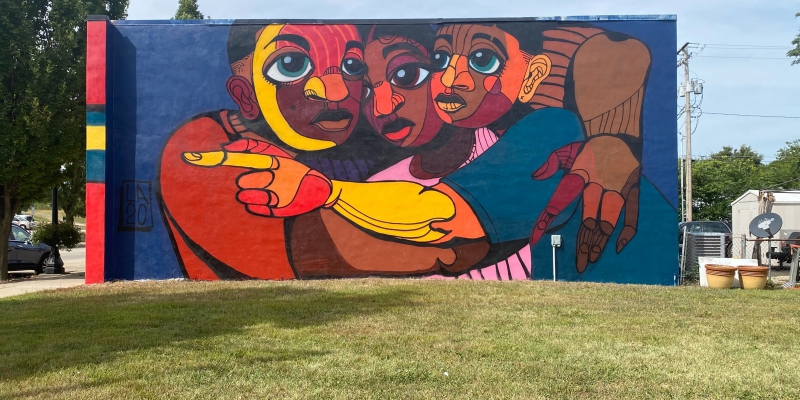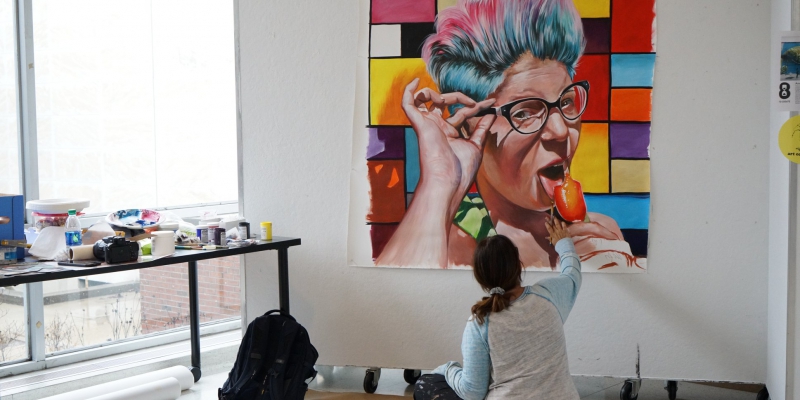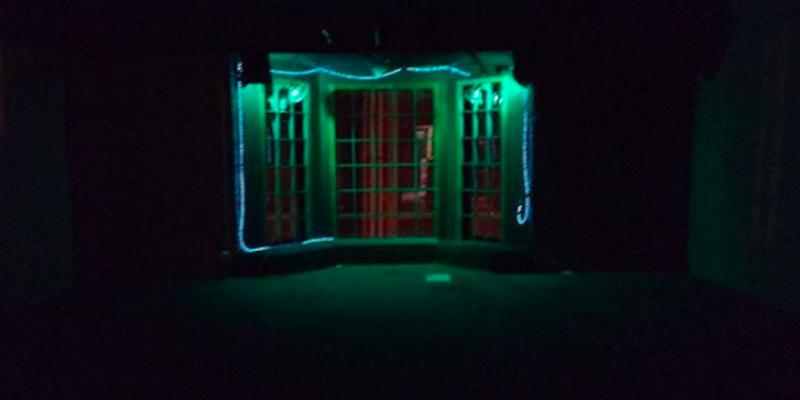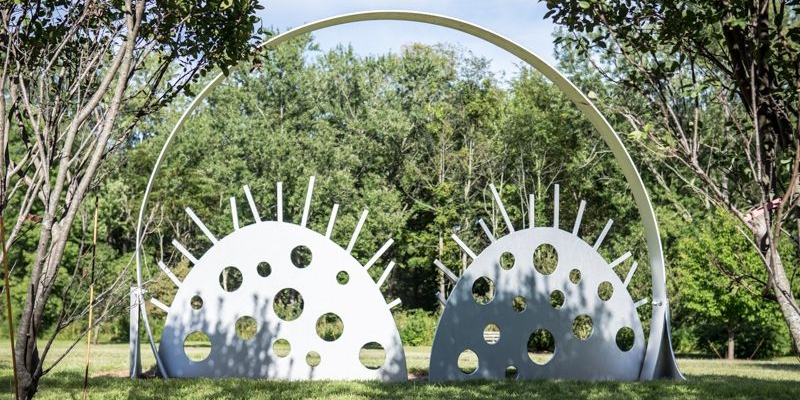The City of Champaign must establish a public arts commission by the end of the next fiscal year in 2021. It is clear we are at the precipice of a radical shift in priorities, both here and nationwide. If we are to find success, and healthy potential, we must create opportunity to let our artists lead that change. And we are now at the point where we can only do that by city hall making their work a priority.
For the 160 years that the City of Champaign has been officially incorporated, it has mostly failed its citizens as supporters of the arts. Mayors and City Managers and Councilmembers have come and gone and yet, for its entire history, the city has also played host to an impressive list of people putting forth amazing artistic output from musicians, visual artists, designers, architects and more.
Up until about 1995, just after Marc Andreessen and Eric Bina cemented the future of the world inside of a mouse click, The University of Illinois and its pedigree always ensured a consistent amount of artistic engagement for the campus and the community. In 2020, the face of that University has changed. The north quad has understandably supplanted the south quad as far as where the majority of the attention is paid, and where resources are being offered, and ultimately, where checks are being written. The emphasis placed on STEM research and education has quickly created an imbalanced campus as far as where the funding goes. As an example, in 1992, Krannert Center for the Performing Arts started taking in student fees to meet the demand for the high quality performances in its theater spaces. It was endemic of a growing pattern of defunding for the arts.
The aftermath of 50 years of trickle down economics across the country have set the stage; combined with the stark reality that a once truly enriching central business district — comprised of Campustown and Downtown — has been stripped of literally almost all of its cultural spaces and music venues, in exchange for Starbucks and national chains, along with upscale gastropubs, we now need the support of the tax paying community if we have any chance of earning new credibility or places to see or to create art.
Before long, the only place that we may be able to go see a movie will be at the Virginia Theater, owned and operated by the Champaign Park District. Yes, CPD takes a percentage of our property tax revenue and turns it into opportunities for everyone to enjoy.

Photo by Julie McClure.
Just last week, Champaign native and U of I alum Langston Allston, painted an incredible mural on the side of the North First Street Barber Shop, just across the street from the Champaign Police Department. It was paid for by a GoFundMe campaign started by family friend Dusty Frye, who reached out to the city before any paint hit the wall. But the city staff didn’t have any process to which to adhere, no steps for submission to ensure quality control, no one inside of city hall to offer guidance, or funding for the project.
“They didn’t support us in terms of funding or advertising unless it was through a (private and personal) donation. They told us it was legal and their office liked the design. They didn’t give us any marketing or organizational support or money,” Frye wrote to us.
According to Bruce Knight, the Planning and Development Director for the City of Champaign, there has never been any sort of guidelines or standards that private businesses or residents must follow when painting a wall of a building. “If it is a commercial sign, there is language in the code that we follow that limits the size and content, but nothing for anything like this,” Knight said.
In the current moment, Urbana has a far better arts and cultural scene than Champaign, by a longshot. We do not believe this is simply by chance.

Photo from 8 to Create’s Facebook page.
The City of Urbana has found a way to incorporate a Public Arts and Culture Program into its annual budget, and has done so for over a decade. It was established when Mayor Laurel Prussing was in office, and the results, even with an extremely small budget — a budget that demands far more attention and funding from Mayor Marlin and her team of advisors — has been encouraging. Dozens of projects are granted money each year, and the work is created and presented within the city limits of Urbana, oftentimes in its Downtown district, which has seen a fair amount of growth over the same period of time. Artists receive grants, festivals receive funding to create events*, and people of all stripes engage with one another in an ongoing collection of discussions and ideation, each and every year.
Kevin Hamilton, the Dean of Fine and Applied Arts at the University of Illinois, has been witness to how even small moves on the part of the City of Urbana and its work in the arts has been a boon to professors and students, and believes the same would be true and perhaps more valuable for Champaign.
We would welcome a role in such an effort, drawing from our expertise in Arts and Community Development to help the city and region develop an inclusive arts strategy through asset mapping and study or regional strengths and potentials, especially where the city integrated such a commission into its broader work, looking to the role of the arts across the board from social services, health, and education to economic development.
Ultimately, however, this all rests in the hands of city council to give direction to city staff. We reached out to Matt Roeschley, the Deputy City Manager at the City of Champaign, to ask about current funding possibilities for an artist like Allston to complete a mural.
While the City supports the arts through partnerships with 40 North and the Public Art League, there is otherwise no dedicated funding or mechanism for supporting something like public art projects at present. That said, if a majority of the City Council were interested in supporting a particular project or proposal, they could direct staff to explore whether and how the City might provide support and present alternatives for Council consideration on a case-by-case basis.

Photo by Mike N Molly’s Instagram page.
It has been painful for the arts community to watch the inaction of seated members of the council while the cultural institutions inside of their city have crumbled. In the past two decades, we’ve watched almost a dozen venues go from thriving to closed. 40 North, the aforementioned non-profit arts council run by Kelly White, has to appear before them each year with a song and dance, along with a time consuming showcase of its entire budget, and beg for a pittance. The budget the City provides did improve by over 60% in 2019-20, but that doesn’t sound as good as it looks. The funding went from $30,000 annually to $50,000 for a one year agreement. That was less than what they asked for — which was a three year agreement — and it wasn’t sustainable this year, and won’t be sustainable for future generations to build upon.
The 40 North budget needs an added zero. A generous amount of funding from both municipalities and the University of Illinois would be a good step in making it possible.
We are firmly aware of the budget cuts coming as a result of tax revenue being down from COVID-19, but if there were ever a moment for the city to showcase adaptive and progressive change, this is likely it. There are ways to start laying the groundwork for the future, instead of waiting until things improve. The foundation of a public arts commission would create space for lots of people to start exploring ways to make it effective. There are people and corporations inside of this community who could not only be helpful, but that could provide funding to get the project off the ground.
A public arts commission, with input and funding from a wide array of organizations inside of our community, would go a long way in helping to start a healing process that we need, to imagine a robust community that offers creative support to all its residents.
The Editorial Board is Seth Fein, Jessica Hammie, Julie McClure, and Patrick Singer.
*The same parent company that publishes Smile Politely owns PYGMALION, an annual festival that received a grant for 2020-2021.








